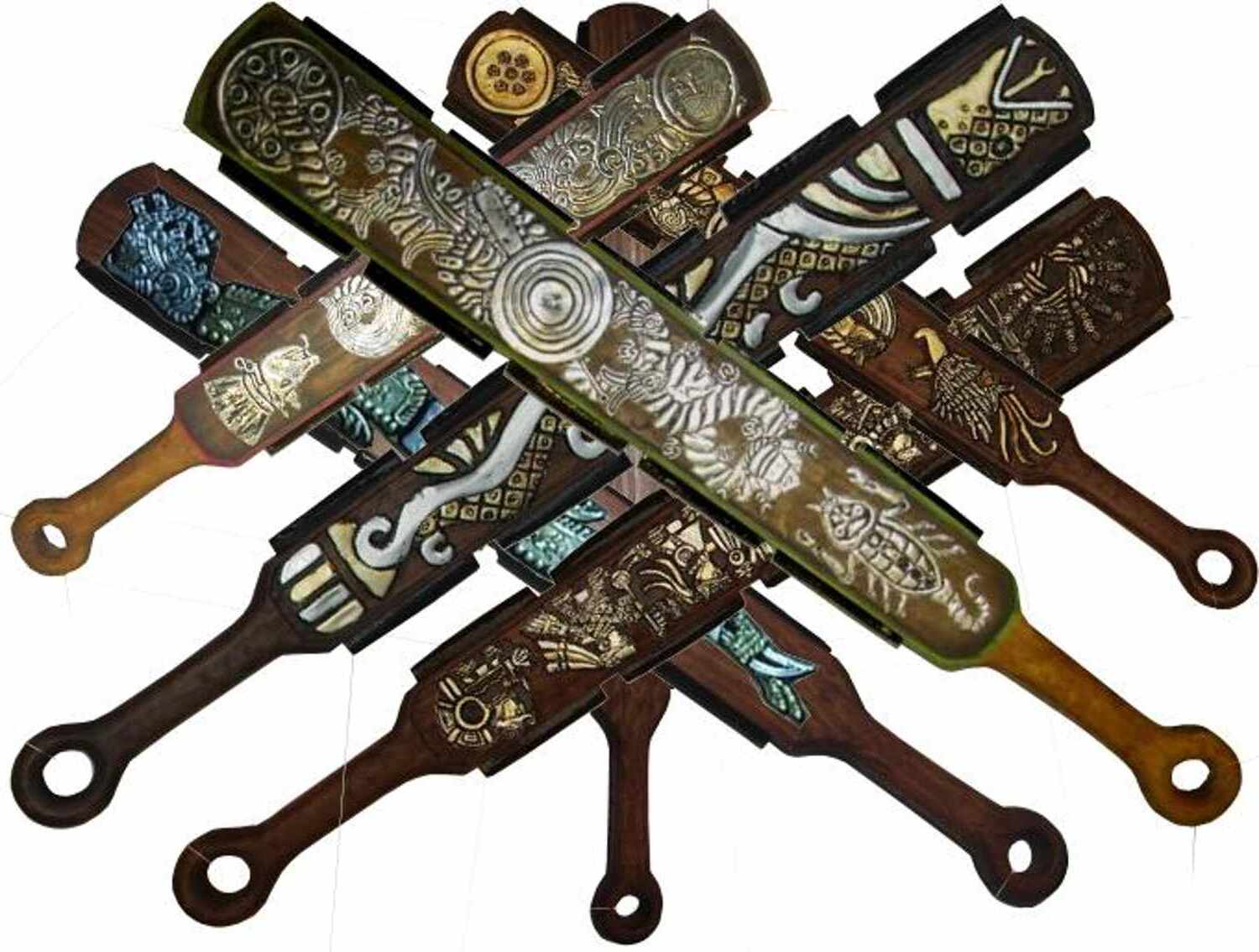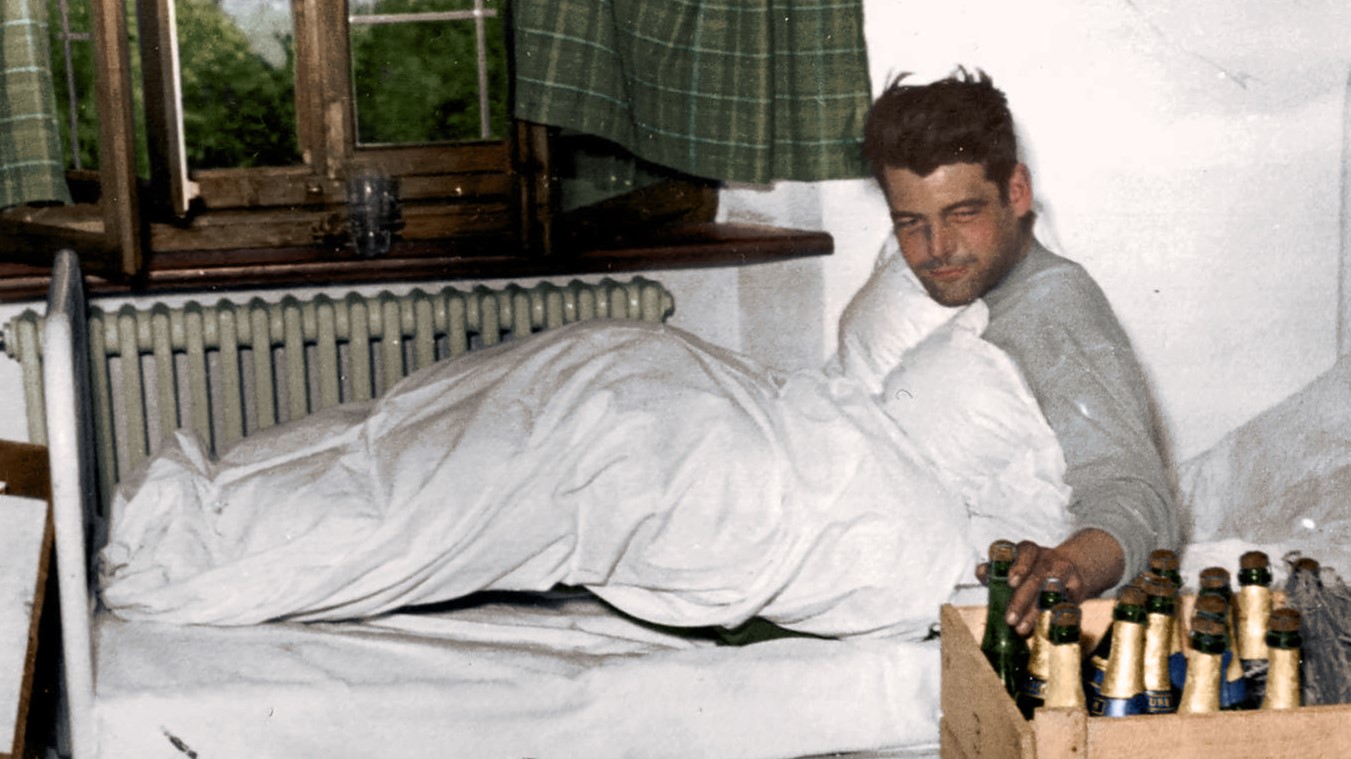
Ever wondered what weapon could slice through armor and still be made of wood? Meet the macuahuitl, a unique weapon from ancient Mesoamerica. This wooden club, embedded with razor-sharp obsidian blades, was a staple in the arsenals of the Aztecs, Mayans, and other civilizations. Unlike European swords, the macuahuitl combined the blunt force of a club with the cutting power of glass-like obsidian. Despite no surviving specimens, historical accounts and replicas reveal its deadly efficiency. From its construction to its cultural significance, the macuahuitl offers a glimpse into the ingenuity and artistry of ancient warriors. Ready to learn more? Let's dive in!
What is a Macuahuitl?
The macuahuitl is a unique weapon from ancient Mesoamerica. It combines the features of a club and a sword, making it a fascinating subject for history buffs and weapon enthusiasts alike. Let's dive into some intriguing facts about this ancient weapon.
-
Name and Origin
The name "macuahuitl" comes from the Nahuatl language, meaning "hand-wood." This reflects its construction, which involves a wooden club embedded with sharp obsidian blades. -
Design and Construction
The macuahuitl features a wooden handle and a flat paddle with sharp obsidian or flint fragments set into grooves along the sides, creating a deadly serrated edge. -
Materials Used
Wood forms the base of the macuahuitl, while obsidian or flint provides the cutting edges. Obsidian is particularly notable for its ability to produce edges sharper than high-quality steel razor blades. -
Length and Dimensions
Typically, a macuahuitl measures between 0.91 to 1.22 meters (3 to 4 feet) in length and about 75 mm (3 inches) in width. Some larger models required two hands to wield, similar to a broadsword.
Blade Configuration and Historical Use
The macuahuitl's blade configuration and historical use highlight its effectiveness and versatility in combat.
-
Blade Configuration
Blades on a macuahuitl are prismatic and embedded in the wooden paddle. They can be arranged in rows with gaps or in a continuous design resembling scales. These blades are usually 2.5 to 5 cm (1 to 2 inches) long and secured with natural adhesives like bitumen. -
Historical Use
The macuahuitl has been used since the first millennium CE. By the Spanish conquest, it was widespread across Mesoamerica, employed by civilizations like the Aztecs, Mayans, Mixtecs, and Toltecs. -
Combat Usage
Designed for close combat, warriors used the macuahuitl after archers and slingers had engaged the enemy from a distance. Its sharp edges made it highly effective in inflicting serious lacerations. -
Comparison to European Swords
Historians compare the macuahuitl to a European broadsword in design and functionality. However, it stands out as a unique hybrid weapon, neither a sword nor a club.
Surviving Specimens and Replicas
Despite the lack of surviving specimens, replicas and historical accounts provide valuable insights into the macuahuitl's design and effectiveness.
-
Surviving Specimens
No actual specimens of the macuahuitl have survived to the present day. Our knowledge comes from historical accounts, illustrations, and descriptions from the 16th century and earlier. -
Replicas and Experimental Archaeology
Replicas of the macuahuitl have been created and tested in experimental archaeology. These tests show the weapon's effectiveness in inflicting severe lacerations on targets like sides of beef. -
Historical Accounts
Conquistador Bernal Díaz del Castillo described the macuahuitl in detail, noting its length of 0.91 to 1.22 meters and width of 75 mm, with sharp flint or obsidian pieces firmly fixed in grooves along both edges. -
Adhesives Used
Historian Marco Cervera Obregón noted that natural adhesives like bitumen were used to attach the sharp obsidian pieces to the wooden paddle.
Variations in Design and Cultural Significance
The macuahuitl's design variations and cultural significance reflect its adaptability and importance in Mesoamerican societies.
-
Variations in Design
There were two main versions: the macuahuitl, about 70 to 80 cm long with six to eight blades on each side, and the mācuāhuitzōctli, a smaller club about 50 cm long with only four obsidian blades. -
Grip Types
Depending on its size, the macuahuitl could be wielded with one or two hands. The two-handed version was as tall as a man, emphasizing its size and impact. -
Shape Variations
The macuahuitl came in various shapes, including rectangular, ovoid, or pointed, allowing warriors to adapt the weapon to different combat situations. -
Cultural Significance
The macuahuitl held significant cultural and symbolic value. Often decorated with rich adornments, it reflected the social status of its owner. Montezuma, for example, had two houses stocked with richly adorned weapons.
Use by Different Civilizations
The macuahuitl was not exclusive to the Aztecs; other Mesoamerican civilizations also employed this versatile weapon.
-
Aztec Use
The Aztecs were among the most prominent users of the macuahuitl. It was a standard close combat weapon in their military arsenal, crucial in their expansionist policies and battles. -
Mayan and Mixtec Use
Other civilizations like the Mayans and Mixtecs also used the macuahuitl. A carving at Chichen Itza shows a Mayan warrior holding a macuahuitl, depicted as a club with separate blades sticking out from each side. -
Spanish Conquest
During the Spanish conquest of Mexico, the macuahuitl was noted by Spanish conquistadors who described it as a sword due to its effectiveness in combat. Native warriors in the service of Spain also used it. -
Prestige and Perception
Metal swords brought more prestige to Indian auxiliaries than the macuahuitl in the eyes of both Europeans and natives, reflecting the cultural value placed on metal over obsidian.
Surviving Examples and Replica Testing
Despite the loss of actual specimens, surviving examples and replica testing provide valuable insights into the macuahuitl's design and effectiveness.
-
Surviving Examples
One macuahuitl survived the Conquest of the Aztec Empire and was part of the Royal Armoury of Madrid until destroyed by a fire in 1884. Images of its original design survive in various catalogues. -
Replica Testing
For documentary shows like "The Deadliest Warrior," replicas of the macuahuitl were created and tested against targets like horse heads. These tests demonstrated the weapon's effectiveness in decapitating models in just three blows.
Obsidian Mines and Tool Evolution
The macuahuitl's construction relied on the availability of obsidian, a material with a long history of use in Mesoamerican tool-making.
-
Obsidian Mines
Obsidian mines were located near Aztec settlements and in the north mountain areas of the Valley of Mexico. The Sierra de las Navajas (The Spiny Mountains) was named for its obsidian deposits, which supplied the raw material for macuahuitls. -
Tool Evolution
Tools made from obsidian fragments predated the Aztecs. Obsidian knives, drills, razors, and arrowheads found at Aztec sites indicate a long history of tool-making using this material.
Cultural Exchange and Historical Documentation
The macuahuitl's use reflects cultural exchange within Mesoamerica, and historical documentation helps us understand its design and functionality.
-
Cultural Exchange
The use of macuahuitls reflects cultural exchange and technological diffusion within Mesoamerica. Different civilizations adapted and modified the design based on their needs and traditions. -
Historical Documentation
Eyewitness accounts by Spanish conquistadors like Bernal Díaz del Castillo provide detailed descriptions of the macuahuitl. These accounts help historians reconstruct its design and functionality.
Artistic Depictions and Experimental Archaeology
Artistic depictions and experimental archaeology offer further insights into the macuahuitl's significance and effectiveness.
-
Artistic Depictions
Macuahuitls have been depicted in various forms of Mesoamerican art. These depictions often show warriors wielding the weapon in battle scenes, highlighting its importance in both practical and symbolic contexts. -
Experimental Archaeology
Replicas of the macuahuitl have been tested in experimental archaeology to understand its effectiveness in combat. These tests have shown that it could inflict severe lacerations due to its serrated edge and sharp obsidian blades.
Historical Context and Social Status
The macuahuitl's use during significant historical periods and its association with social status reflect its importance in Mesoamerican societies.
-
Historical Context
The macuahuitl was used during a period of significant historical change in Mesoamerica. Its use spanned from the Classic to Post-Classic stage (900–1570 CE), a time marked by the rise and fall of various civilizations. -
Social Status
Socially prominent men used richly decorated macuahuitls. These weapons were often adorned with gold and precious stones, reflecting the owner's status and wealth.
Military Equipment and Symbolic Significance
The macuahuitl was part of a broader array of military equipment and held symbolic significance in Mesoamerican cultures.
-
Military Equipment
The macuahuitl was part of a broader array of military equipment used by Mesoamerican civilizations. Other notable items include round shields (chīmalli), bows (tlahuītōlli), and spear-throwers (ahtlatl). -
Symbolic Significance
Beyond its practical use as a weapon, the macuahuitl held symbolic significance. It represented strength, power, and cultural identity among its users.
Educational Significance and Legacy
Studying the macuahuitl provides valuable insights into Mesoamerican culture and technology, and its legacy continues through ongoing research.
-
Educational Significance
The study of the macuahuitl provides valuable insights into Mesoamerican culture, technology, and warfare. It serves as an educational tool for understanding historical contexts and technological advancements in ancient societies. -
Legacy
Despite its destruction and the loss of actual specimens, the macuahuitl remains an important part of Mesoamerican history and cultural heritage. Its legacy continues through historical accounts, replicas, and ongoing research into its design and functionality.
The Legacy of the Macuahuitl
The macuahuitl stands as a testament to the ingenuity and craftsmanship of Mesoamerican civilizations. This unique weapon, blending wood and obsidian, played a crucial role in the warfare and culture of the Aztecs, Mayans, and other groups. Despite no surviving specimens, historical accounts and replicas reveal its deadly effectiveness. The macuahuitl wasn't just a tool of war; it symbolized power, status, and cultural identity. From its sharp obsidian blades to its richly adorned handles, every detail tells a story of a rich and complex society. Today, the macuahuitl continues to fascinate historians, archaeologists, and enthusiasts, offering a glimpse into a world where technology and tradition intertwined. Its legacy lives on through ongoing research, educational efforts, and the enduring curiosity it sparks about Mesoamerican history.
Was this page helpful?
Our commitment to delivering trustworthy and engaging content is at the heart of what we do. Each fact on our site is contributed by real users like you, bringing a wealth of diverse insights and information. To ensure the highest standards of accuracy and reliability, our dedicated editors meticulously review each submission. This process guarantees that the facts we share are not only fascinating but also credible. Trust in our commitment to quality and authenticity as you explore and learn with us.


